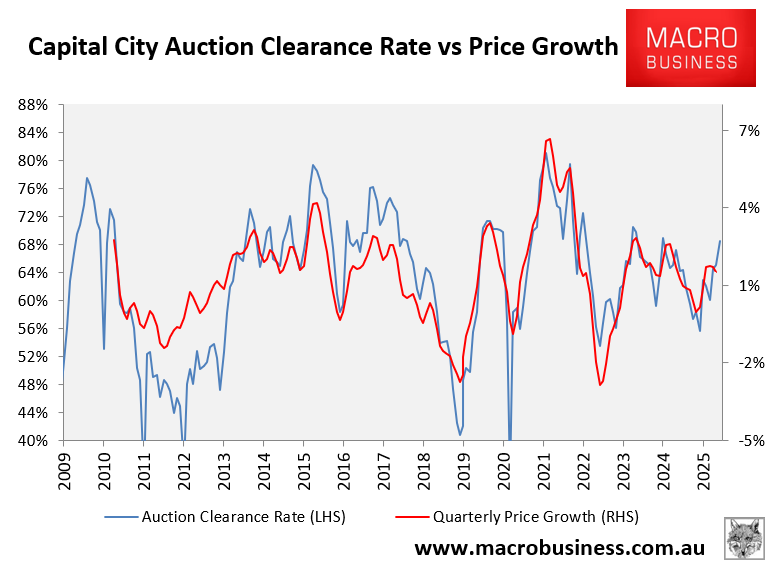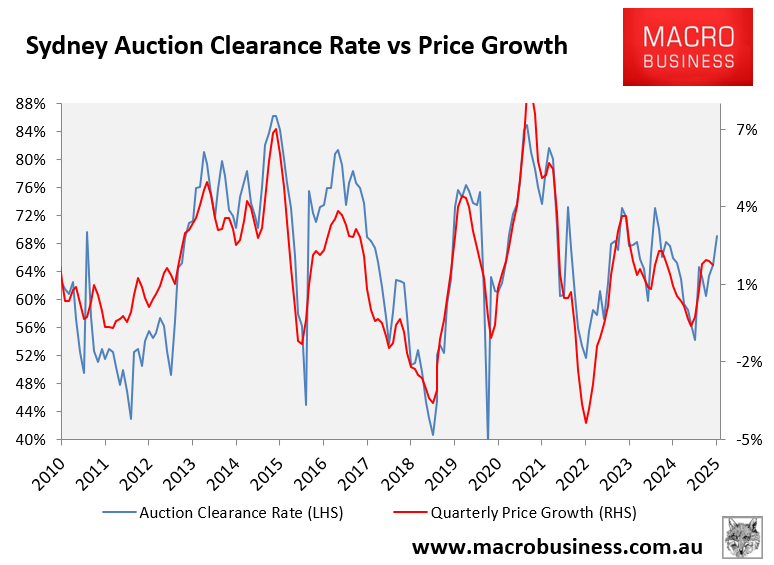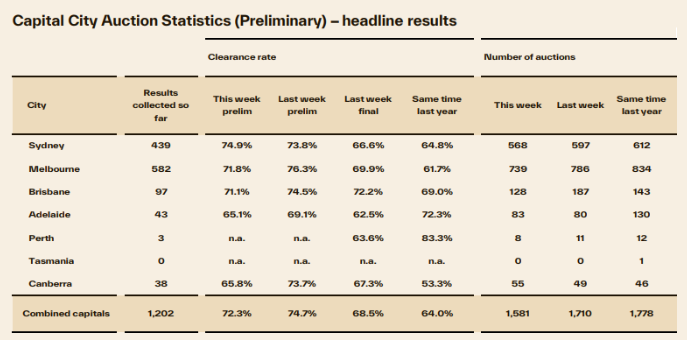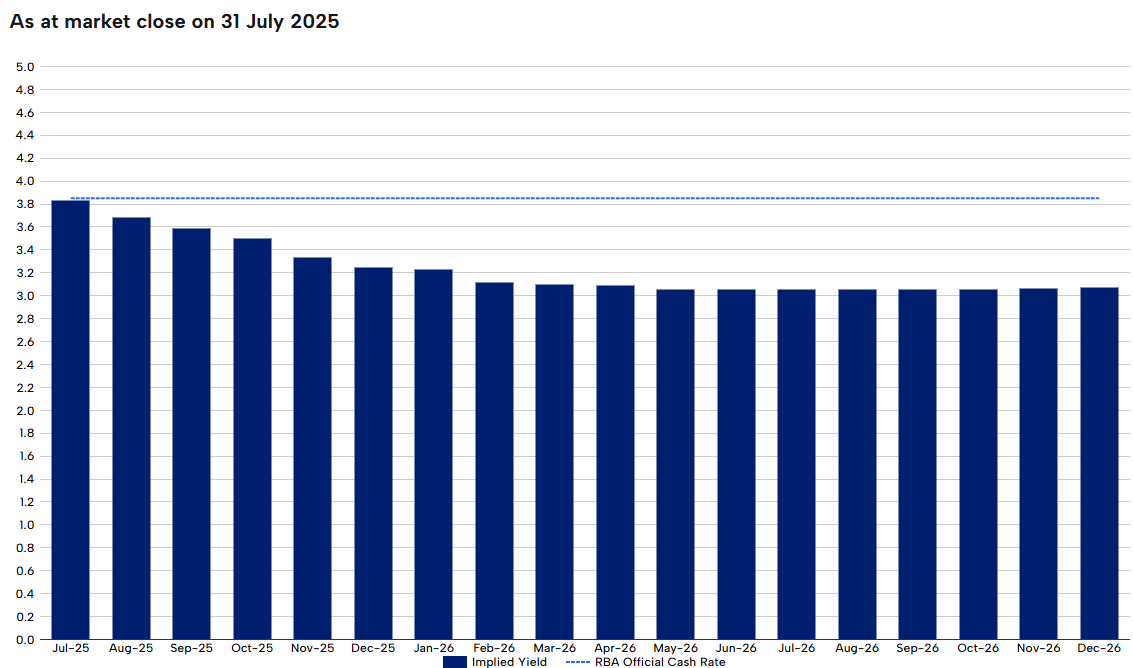Prominent Sydney real estate agent and auctioneer Tom Panos believes that Australia is moving into a “seller’s market” following a series of highly successful auction weekends.
“We’re definitely moving towards a sellers market”, Panos said in his weekend market wrap on YouTube.
“It’s not quite there yet, but when you’re getting 100% out of 100, it says to me that the mood and the sentiment are good”.
“What’s fueling this? Obviously, on August 12th and August 13th, the RBA is having a meeting, and nearly everyone who has an opinion on rates says rates are coming down. So that’s probably the reason”, Panos said.
The auction data backs Panos’ view. The national final auction clearance rate averaged 68% in July, which was the strongest result since February 2024.

Sydney’s final auction clearance rate averaged 69% in July, the city’s strongest result since March 2024.

Melbourne’s final auction clearance rate averaged 69% in July, its strongest result since June 2023.

As illustrated above, higher auction clearance rates have historically corresponded with rising house price growth.
The strong auction conditions continued over the weekend, with Cotality reporting a national preliminary clearance rate of 72.3%. This marked the eighth consecutive week where the preliminary clearance rate has held above 70%.

Source: Cotality
Sydney’s 74.9% preliminary clearance rate was the third-highest result this year and the eighth consecutive week where the preliminary clearance rate has held above 70%.
Melbourne’s preliminary clearance rate of 71.8% was the lowest in three weeks but has held above the 70% mark since the first week of May.
The latest pricing from the futures market tips that the Reserve Bank of Australia (RBA) will deliver three interest rate cuts of 25 basis points by mid-2026, starting with this month’s monetary policy meeting.

Analysis by The AFR indicated that dwelling values typically rise by double-digit rates two years after the beginning of a rate-cutting cycle:

Therefore, the expected 1.25% of monetary easing—i.e., the two rate cuts already delivered plus three more—will inevitably drive house prices higher.
Federal and state governments have also announced several demand-side policies aimed at boosting homebuyer demand and therefore prices.
These policies include the Albanese government’s 5% deposit scheme for first home buyers, the expansion of the Help-to-Buy shared equity scheme, changes to lending rules that exclude student debts from loan serviceability assessments, and state-specific policies like the generous shared equity scheme announced in the most recent Queensland state budget.
Lower borrowing rates and stimulatory policies will inevitably lift demand and prices, making housing affordability structurally worse.

